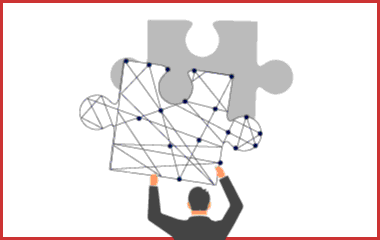Want to make your intranet great (again)? Get rid of the FUD

Intranet Principles
Most of us who have worked on an intranet or have worked at a company with an intranet consider this worthy yet often lacking resource as one of the banes of our terms of employment. And with every launch, relaunch, refresh, etc. we are hopeful that this version will be different; that it actually WILL BE the work tool that actually helps us do our job, connect with our colleagues, and in general, make our life at work even just a little bit easier and interesting.
To deliver on this ever evasive promise, there are a few core intranet principles (IP) that an intranet must adhere to:
IP1: Employee Centric
Employees have to identify with the intranet as their space or it will only ever be relegated in their minds to be that place they HAVE to go to for things like annual health benefits renewal, compliance training, and to see what the week’s cafeteria menu is. Taking the outside-in, employee perspective/approach to content, information architecture, and design will help ensure that it is a tool design for them. This can only be successfully done if they, the employees are actually involved in the design/redesign of the site. Making the site (more) employee-centric includes:
- Organizing, labeling and presenting content so that it makes sense to employees, not just to the company.
- Inviting employees’ feedback and participation in articles and information sharing; use employees to evaluate redesign.
- Making sure content/organization/design are relevant to, and resonate with, employees.
- Providing employees with the opportunity to have some degree of say/control in what they see on the homepage.
IP2: Simple
If a new employee can’t be plopped down in front of the intranet and left to their own devices for a couple of hours to figure out how to get registered for benefits, see what the paycheque schedule is, find office location information, and creep, I mean look up and see who their team members are, then the site is too complicated. This is where many intranets fall down. If all these digital workspaces were designed, developed, and implemented with IP1 – Employee Centricity and IP2 – Simplicity, in mind, the work world would be a much happier place. Ultimately, the employee intranet experience has to be really easy and helpful as part of a normal workday to be adopted and successful. Simplicity means:
- Practicing simplicity in everything on and about the intranet/portal/digital workspace – strategic purpose, staffing, building, designing, writing, etc.
- Streamlining the sign-on process; SSO wherever possible. (Note: Other than the cafeteria menu, this is the most requested feature of an intranet.)
- Increasing search functionality; more keywords, better results (people, content, resources).
- Making the navigation more intuitive (taxonomy/ nomenclature). Using functionality like mega-menus to help users find information and learn about what is available, as well as making sure labeling is relevant and consistent.
- Minimizing the number of clicks to get to what they want/need.
IP3: Pull
Sure, you can get employees to go to the intranet by taking away all other options for must-do activities like annual benefits sign up or time off request forms (although I have seen some pretty creative ways of getting around even these core tasks), but getting them to the site under duress doesn’t exactly evoke feelings of endearment. Digital workspaces have to have content and tools that employees find useful, as well as include calls to action; pulling them in to get the information they want and need. Designing it to encourage and drive collaboration, community-building, and creativity will help draw people in. Allowing them to leverage some of the tools and functionality for their own use, perhaps in ways not previously conceived, helps build a sense of ownership and investment in its ongoing success and evolution.
- Identify what will draw employees to the intranet; deliver employee specific “killer apps” that make their lives easier and more productive;
- Phone lists, org charts, ESS, MSS, online forms.
- Daily/weekly, just-in-time components (calendar of events, world clock, etc.).
- Company & competitive external coverage (automate via RSS).
- Continually invite employees’ opinions and participation in shaping the intranet (measure and adjust).
- Provide information that will permit employees not only to work effectively but also to communicate with ease.
Making your intranet great (again)
Intranets are critical for organizations of all sizes, and it can be tough to see where to go next when the site has gone to seed, particularly when funds to its reboot are limited (as is often the case, and shouldn’t be, but that is a topic for another day’s post). Think about what it could mean to your company – increased employee engagement, which leads to increase productivity, which leads to better overall performance, which leads to higher profitability. And who doesn’t want that?
Want to talk more about how to make your intranet great – join me in Boston on November 28th at the Gilbane Conference where I will be moderating a panel along with BA Insight’s CTO Jeff Fried, and Content Raven’s CEO Joe Moriarty where we will get into the essential elements for making your intranet great again.








